Ok, so today’s recipe is a bit of a mouthful to say, but I promise: it will also be a mouthful of delicious goodness to eat. Today’s recipe is for Sourdough Dark Rye Pumpkin Seed Rolls.
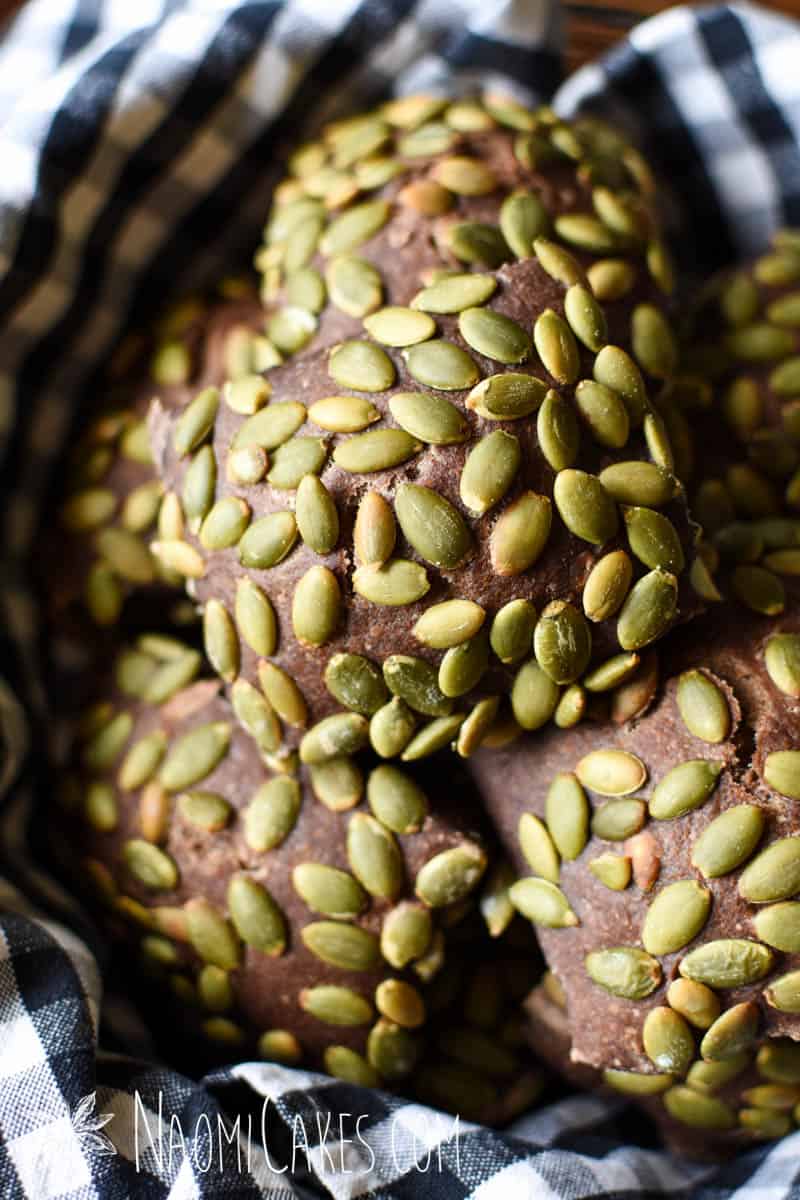
How this recipe came to be
I created this recipe after eating something very like it when I lived in Germany.
Something very like these rolls were available at pretty much every village bakery in my area, and eating one of these fresh with some good cheese and cold cuts was, in my opinion, one of the best things on earth. So, of course, I had to re-create it; and I’m pleased to report that I’m happy with the results!
I’ve made these a few times now, and honestly they are just so good… The flavour of the dark rye is much like pumpernickel bread, with the depth of flavour that only sourdough can offer… and then of course, pumpkin seeds are just incredible. Buttery, crunchy, and nutty. It’s a great combination.
Ways to serve sourdough dark rye rolls
Oh goodness… is there a way not to serve them? Here’s a few of my best recommendations, however:
- Breakfast, with a spread of butter, jam, cheese, or cold cuts to choose from
- Lunch or dinner as a side
- As a delicious sandwich roll
- To make incredible breakfast sandwiches
- Alongside a cup of tea or coffee, with some good quality butter
What is dark rye?
Dark rye is typically a name given for bread made with rye flour which is darkened or flavoured with rich, deep flavours like molasses, cocoa or even coffee. You can purchase flours labeled “Dark rye,” which may have more of the bran or germ from the rye included in the flour (the rye equivalent of whole wheat flour), whereas regular rye flour will include less of that, being the rye equivalent of white flour.
In this recipe, I am using a regular rye flour with the additions of cocoa and molasses to give it that dark look and rich flavor.
What is the difference between dark rye bread and pumpernickel bread?
Pumpernickel bread is made with a coarse ground dark rye flour. The way most of us see it in North America is probably more akin to this recipe, using flour and cocoa to make a dark, rich bread which we often enjoy serving alongside a good creamy dip or spread. In other countries, you are more likely to encounter pumpernickel as a dense, moist, coarse textured bread with a deep, rich flavour. Due to how dense and strong the flavour is, it is often served in thin slices with cheese or some other complimenting accompaniment.
Dark rye bread in this part of the world is often more likely to be encountered as a marbled loaf with regular and dark rye doughs rolled together to make a swirled rye loaf. What we call dark rye in this part of the world, however, is usually just a dark coloured rye loaf with rich additions to give it that incredible chocolate colour.
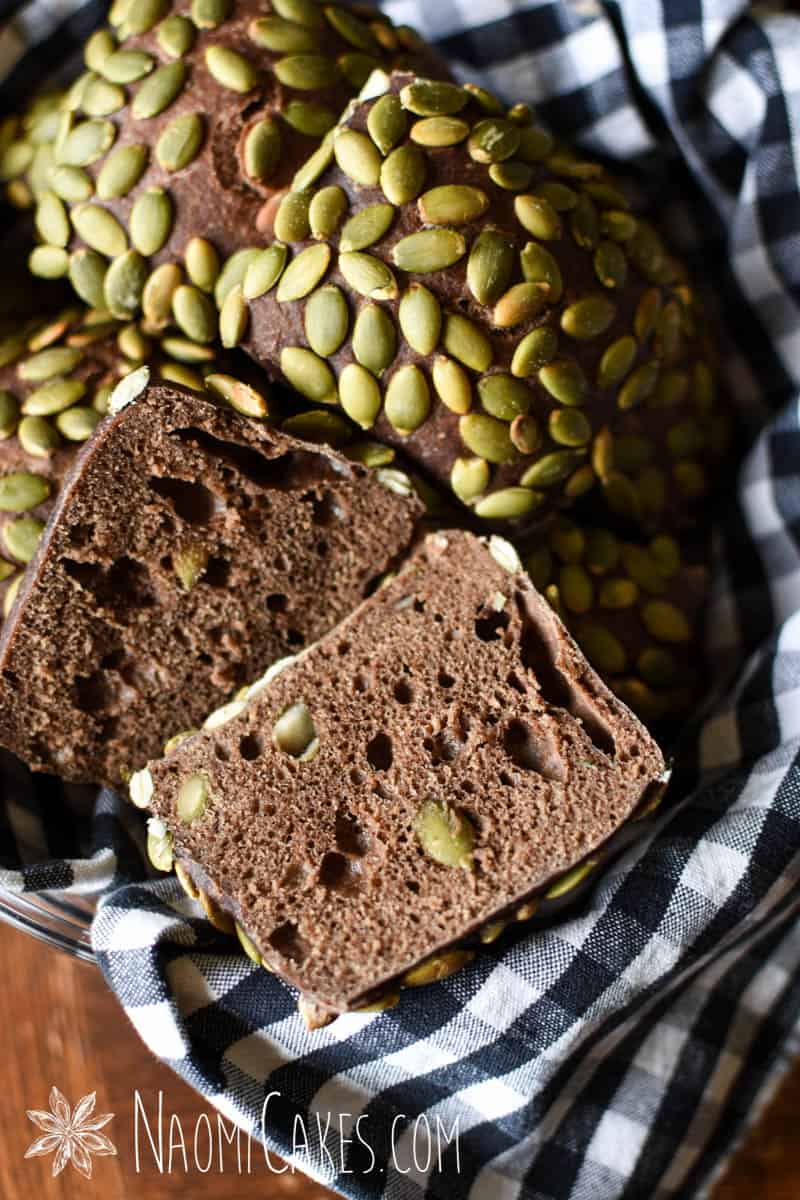
Are these sourdough dark rye rolls complicated to make?
Not at all. Especially if you’ve made sourdough bread before, the process will seem pretty familiar to you. The dough is very soft/sticky, but a well floured work surface and the confidence that the dough should be that way is all you need to power through that and make these pretty easily.
Tips for success
When it comes to making sourdough anything, there are always a few essential things that need to be in order to guarantee your success. This recipe is no different, although the process to make these is slightly different than making bread (obviously).
Make sure you have a good starter
A good quality, active starter culture is essential for making great sourdough anything. If you don’t have a starter yet, you can always purchase a starter culture online, or you can make your own pretty easily, using just flour and water.
Plan ahead
Since you need an active culture to bake these, and they need to ferment overnight before they bake, planning is very important to make sure that you have time to finish the project. I find that I can have these baked fresh the morning of the third day I get them going.
Sample baking schedule:
- Thursday night: Feed the starter
- Friday morning: Make the dough
- Friday afternoon: Shape the rolls & refrigerate
- Saturday morning: Bake the rolls
Bake by weight
I find baking by weight, for sourdough in particular, to be a much better way to guarantee consistent results. This recipe, unlike many of my other recipes, was created by weight instead of using the US standard measuring cups and spoons… So, if you want the most “True to my intention” result, I recommend baking these rolls by weight. If you don’t have a kitchen scale, you can grab one here.
Use parchment paper
This one is definitely optional, but especially when it comes to sticky doughs, I love baking on parchment to make sure that my bread does not stick. For this recipe in particular, to keep the pumpkinseeds densely covering the tops of the rolls, I let them proof upside-down, and then I flip the whole batch over onto a sheet of parchment to bake.
Bake with steam
As is true of all sourdough, baking these sourdough dark rye rolls in an oven with steam is going to be the best way to get get puffy, beautifully proofed bread. This is achieved by using a pan of hot water underneath your baking pan while the rolls bake (my favourite is just to half fill my cast iron pan with boiling water for this), or you can place a tall glass baking dish upside down on top of the rolls to trap the steam around them while they expand.
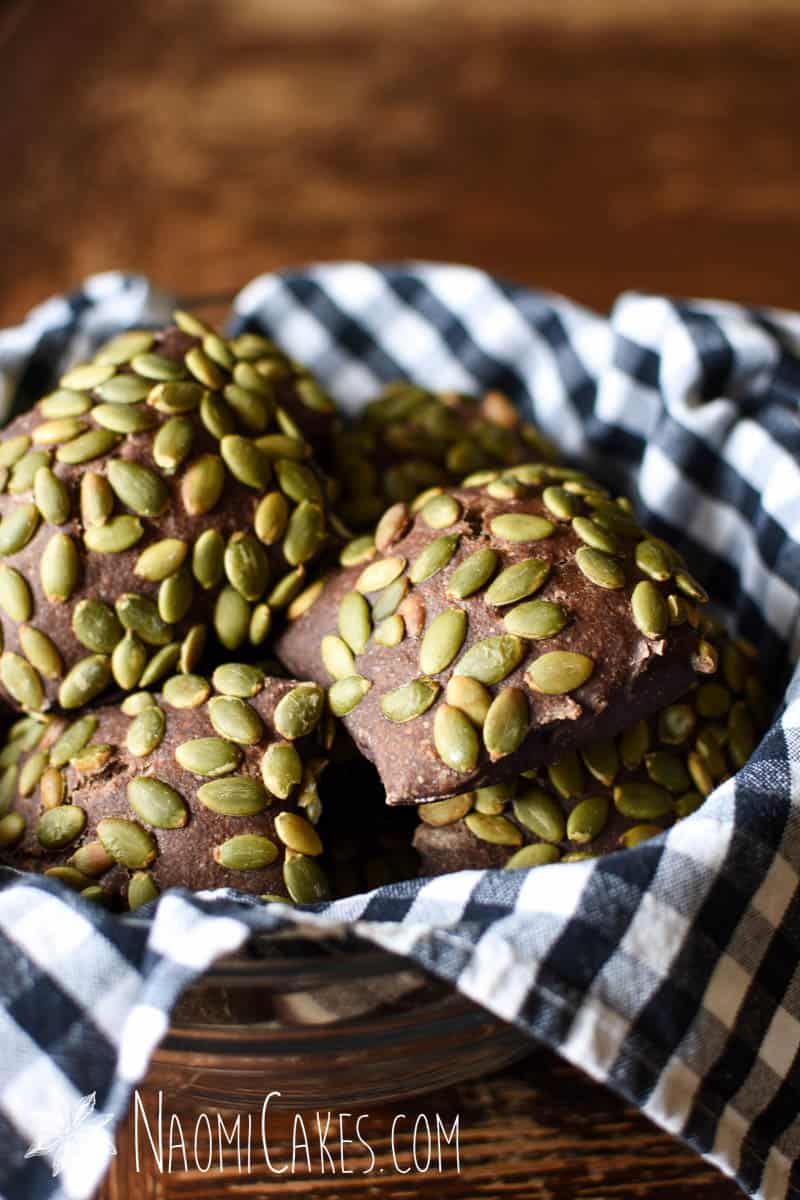
To make this recipe, you will need:
- Ingredients (see recipe card), including raw pumpkin seeds
- Mixing bowls
- Measuring cups and spoons or a kitchen scale
- Wooden stir spoon
- Rolling pin
- Miniature sieve (optional)
- Bench scraper
- Paper towel
- Sharp knife
- Parchment paper
- Tea towel
- Baking sheets
- Tall baking pan, for creating steam in the oven (such as a cast iron pan, a metal 9×13 baking pan, or a tall glass baking dish to place upside down to trap steam on the rolls)
- Cooling racks

Sourdough Dark Rye Pumpkinseed Rolls
Ingredients
- 1-1/2 cups (200g) white flour
- 1 cup (150g) rye flour slightly rounded
- 1-1/2 Tbsp (10g) cocoa powder
- ½ Tbsp (7.5ml) salt
- 1 Tbsp (15ml) molasses
- 2 Tbsp (30ml) pumpkin seeds for the dough
- 1 cup + 2 Tbsp (287g) water
- 2/3 cup (100g) active sourdough starter
- 1 cup (150g) raw pumpkin seeds for the topping
Instructions
-
In a medium/large mixing bowl, combine all of the ingredients except for the last one (the pumpkin seeds for topping the outside of the rolls). Mix with a wooden spoon or your hand until the mixture becomes a shaggy, soft dough (make sure that all of the dry ingredients have been incorporated). Cover with a tea towel and set aside for 30 minutes.
-
After 30 minutes, reach your hand under the dough slightly and pull it up enough to fold it back over itself. Repeat this process 3-5 times or until the dough has a slightly smoother look. Cover and allow this to rest for another 30 minutes.
-
Repeat the stretch and fold process 1 more time, followed by a 30 minute rest, and then again 1 more time. After the final stretch an fold, allow the dough to rest (covered) for 3-6 hours, or until puffy and risen (anywhere from a 30-100% increase in volume will work).
-
Turn the dough out onto a well floured work surface (it will be very soft and sticky), and roll it into a 9×13-inch rectangle. Fold the dough in half, and re-roll into a 9×13-inch rectangle again, keeping enough flour down to prevent the dough from sticking to the table.
-
Using a clean, wet cloth or paper towel, dab the surface of the dough all over to make it tacky. Sprinkle generously with pumpkin seeds, to cover the whole surface, and pat down to make them stick.
-
Using a bench scraper, cut the rectangle into 12 square rolls. Turn each roll upside down (seed side down) onto a parchment lined cookie sheet, leaving some room between the rolls to expand. Cover the rolls with another sheet of parchment, and then a tea towel to weigh it down. Place the pan of rolls in the fridge and leave them overnight (12-24 hours).
-
The next morning, preheat the oven to 425 degrees F (about 218 degrees C). Place a pan of boiling water onto the bottom rack of the oven, and bake the rolls (they will not appear risen) in the oven with the steaming water underneath for 30-35 minutes or until puffy and the pumpkin seeds look slightly toasted. Cool on wire racks.
A look at the stretch and fold process:

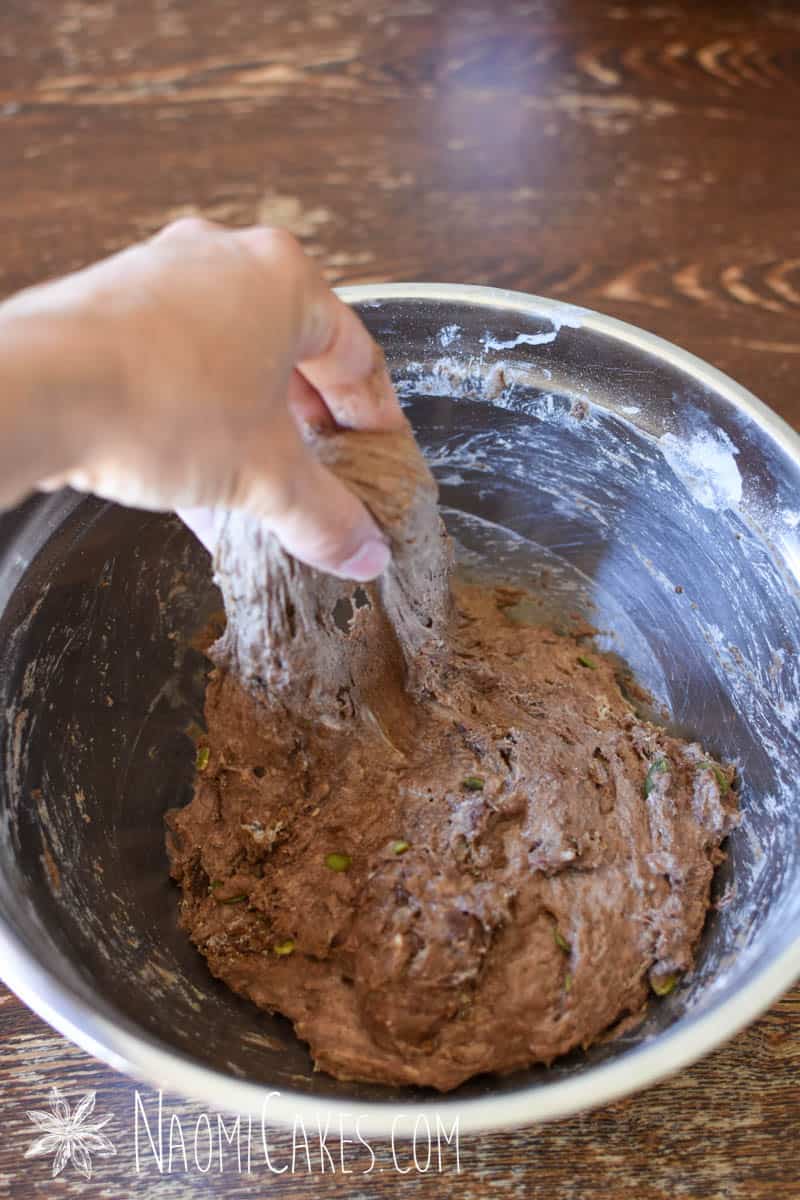
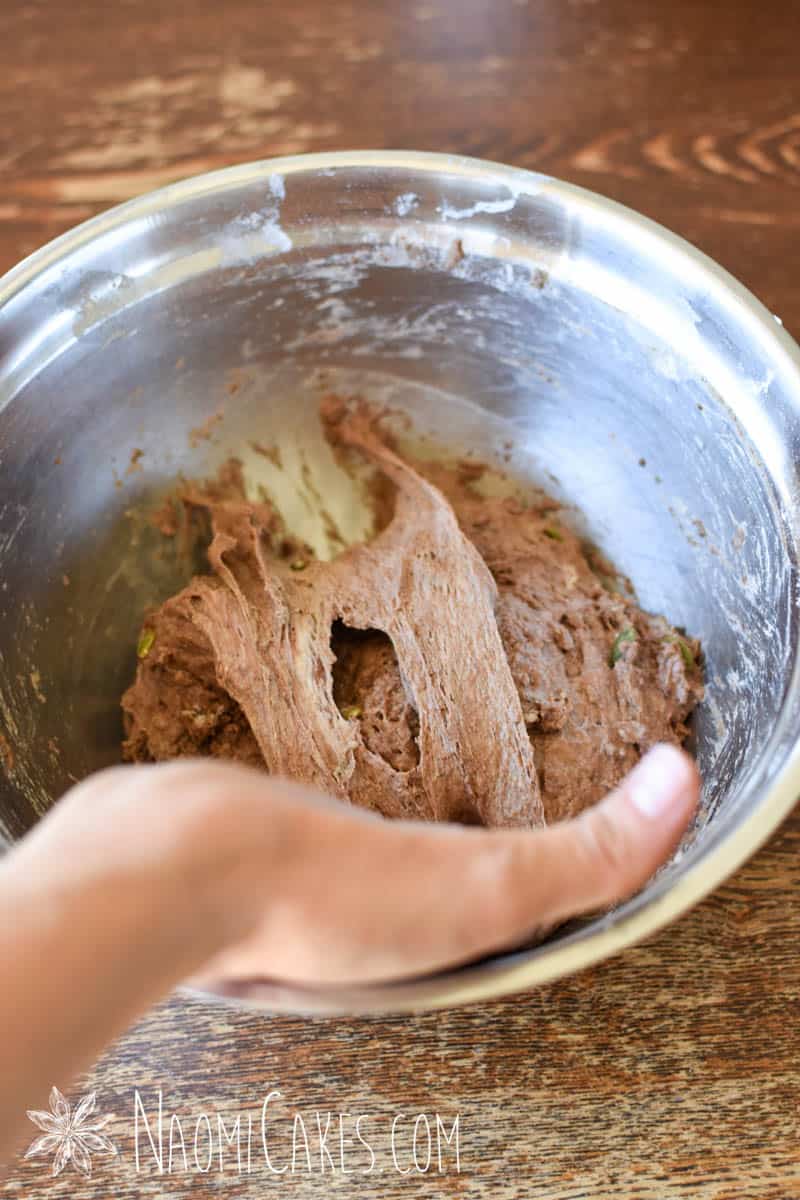
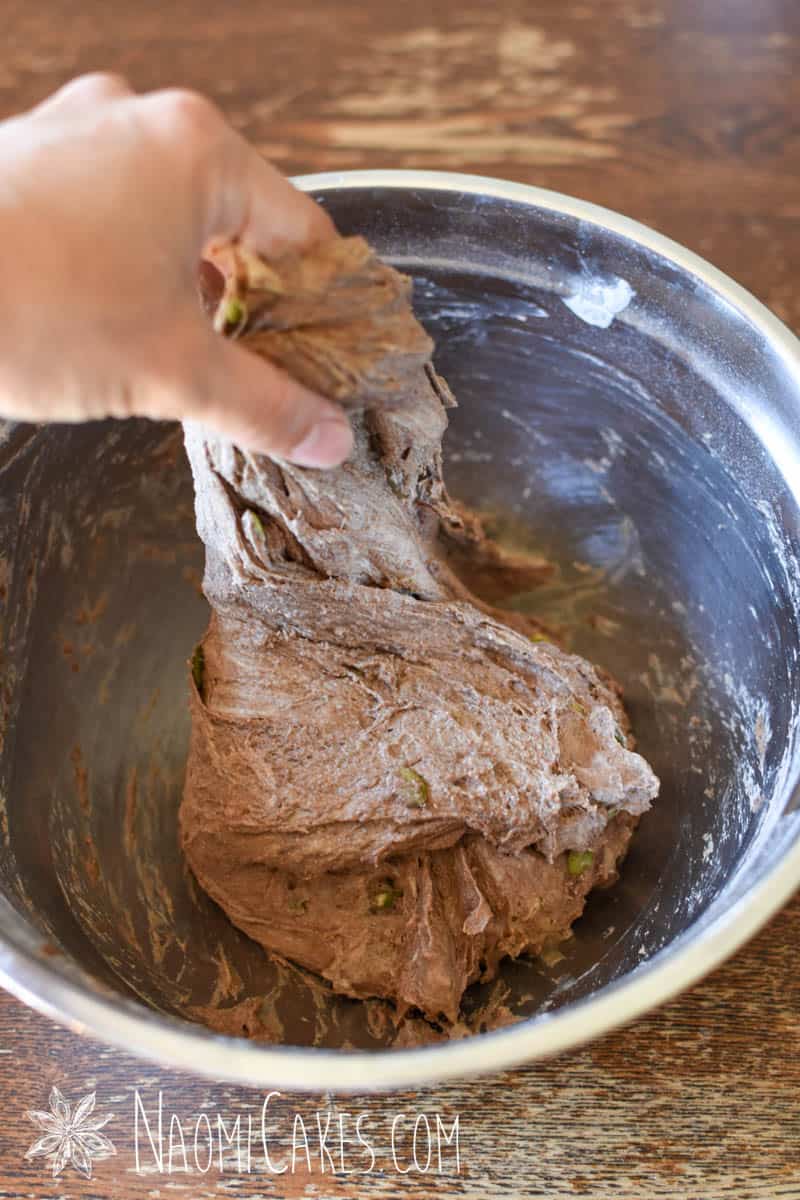
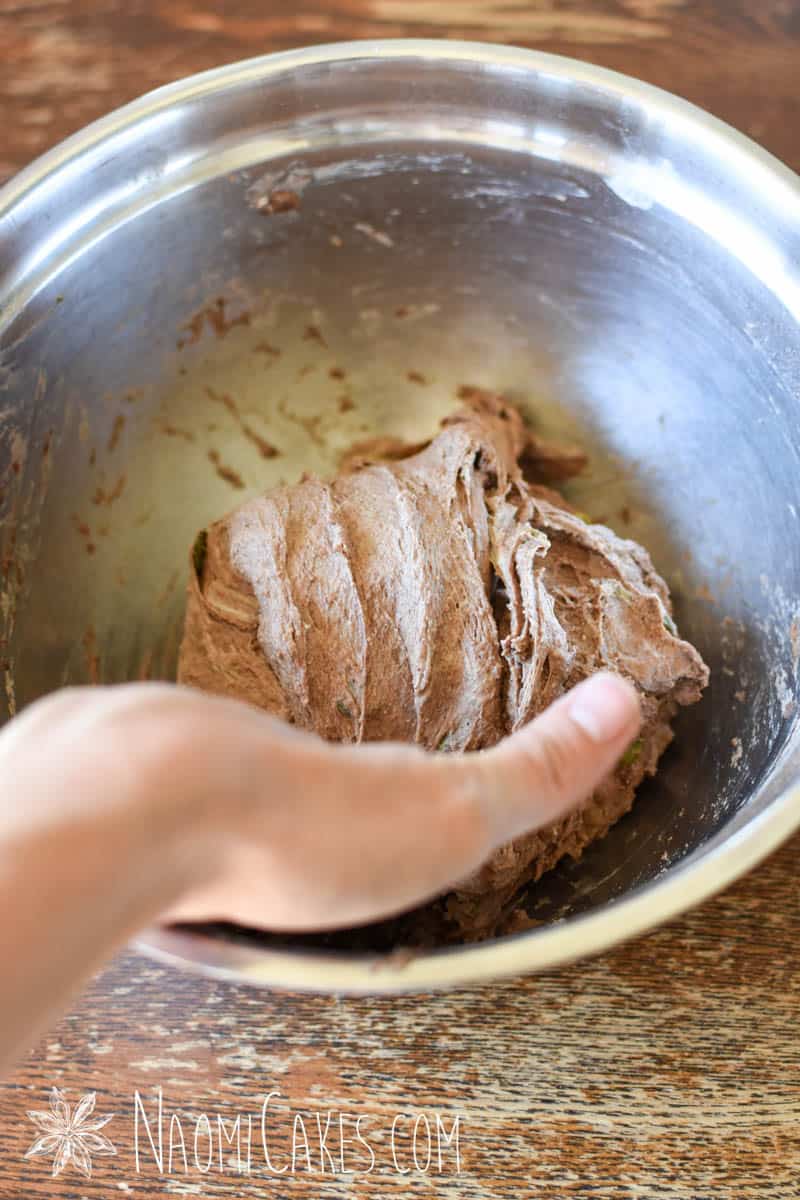
Rolling the risen dough:
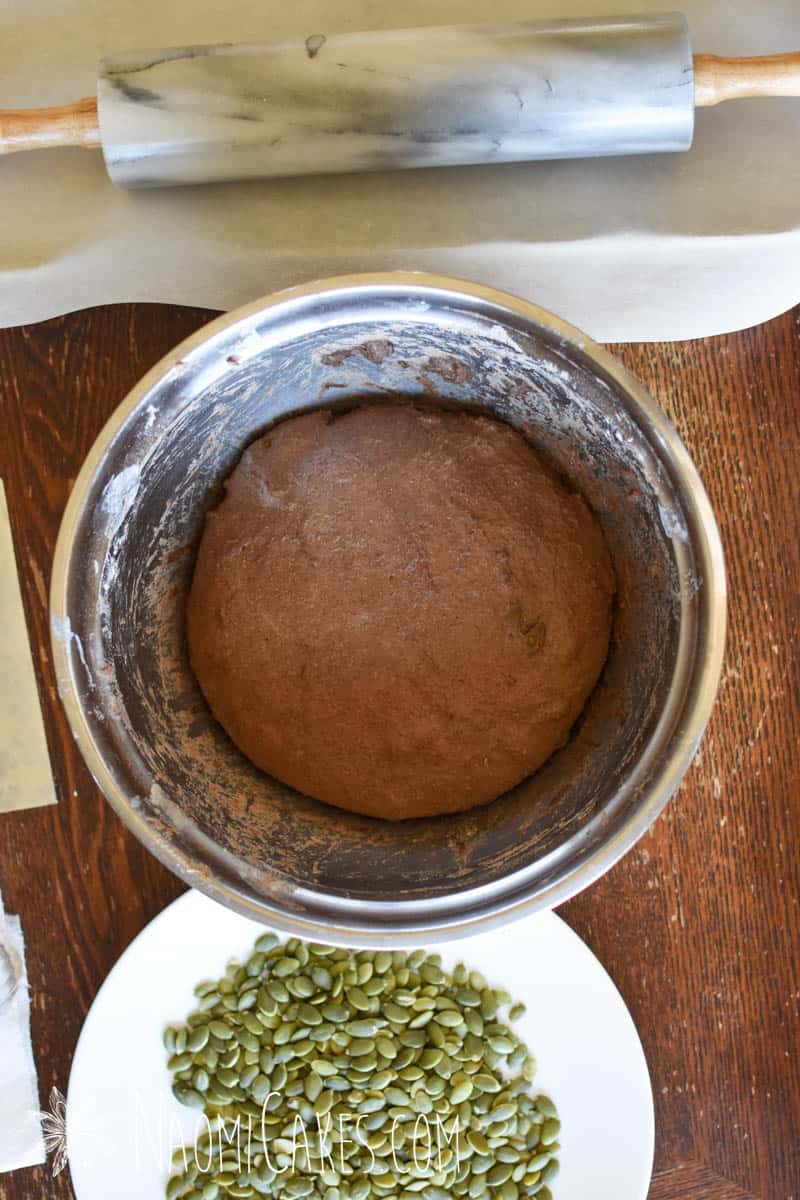
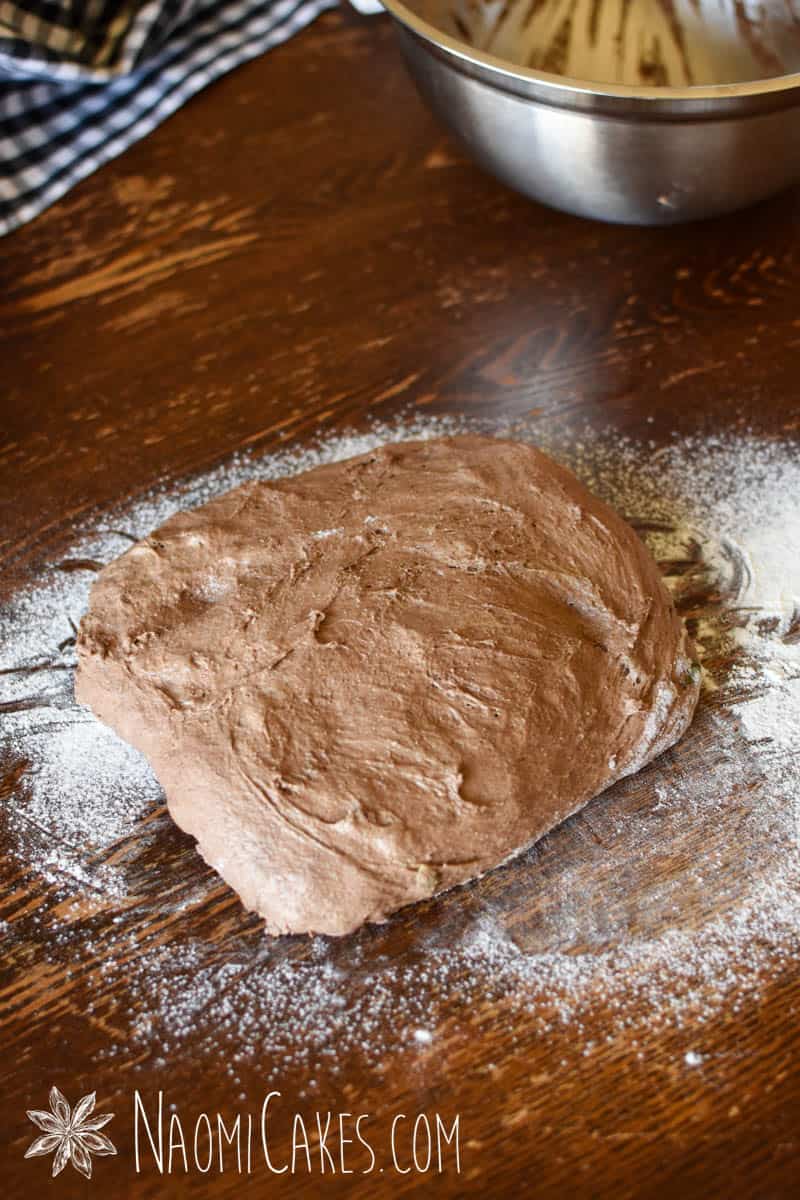
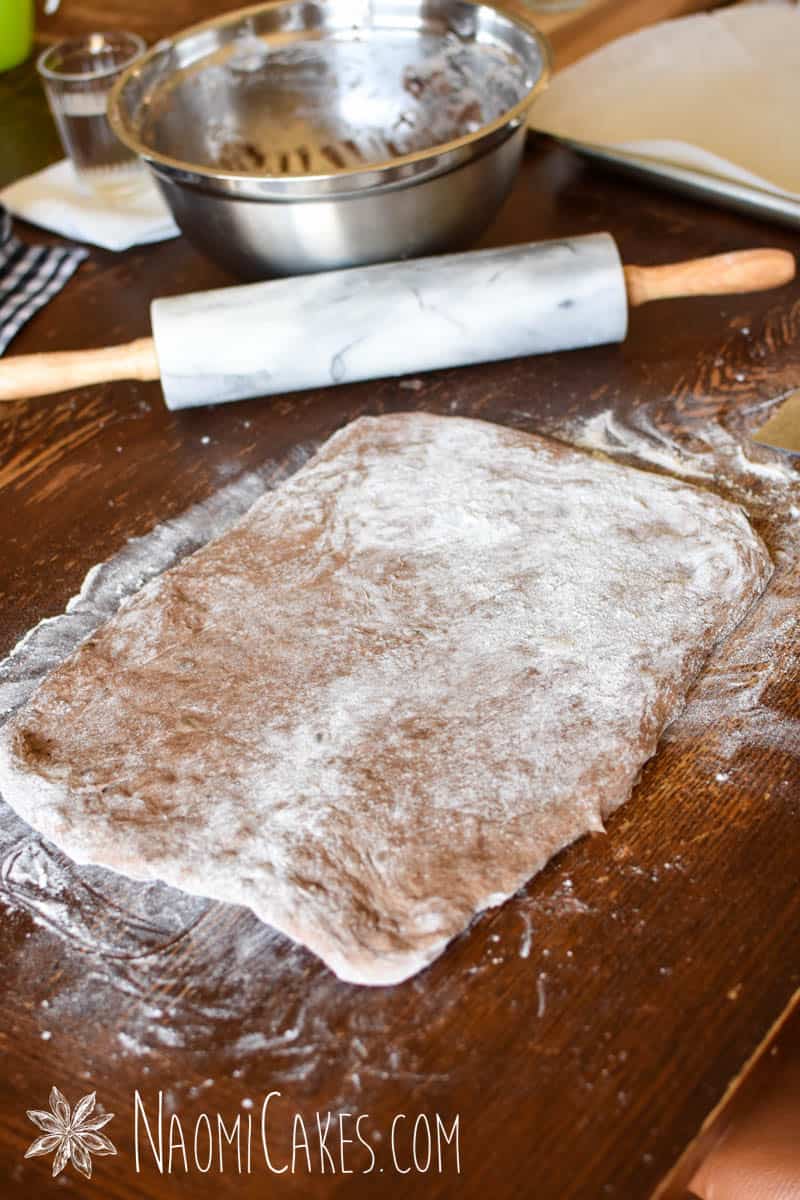
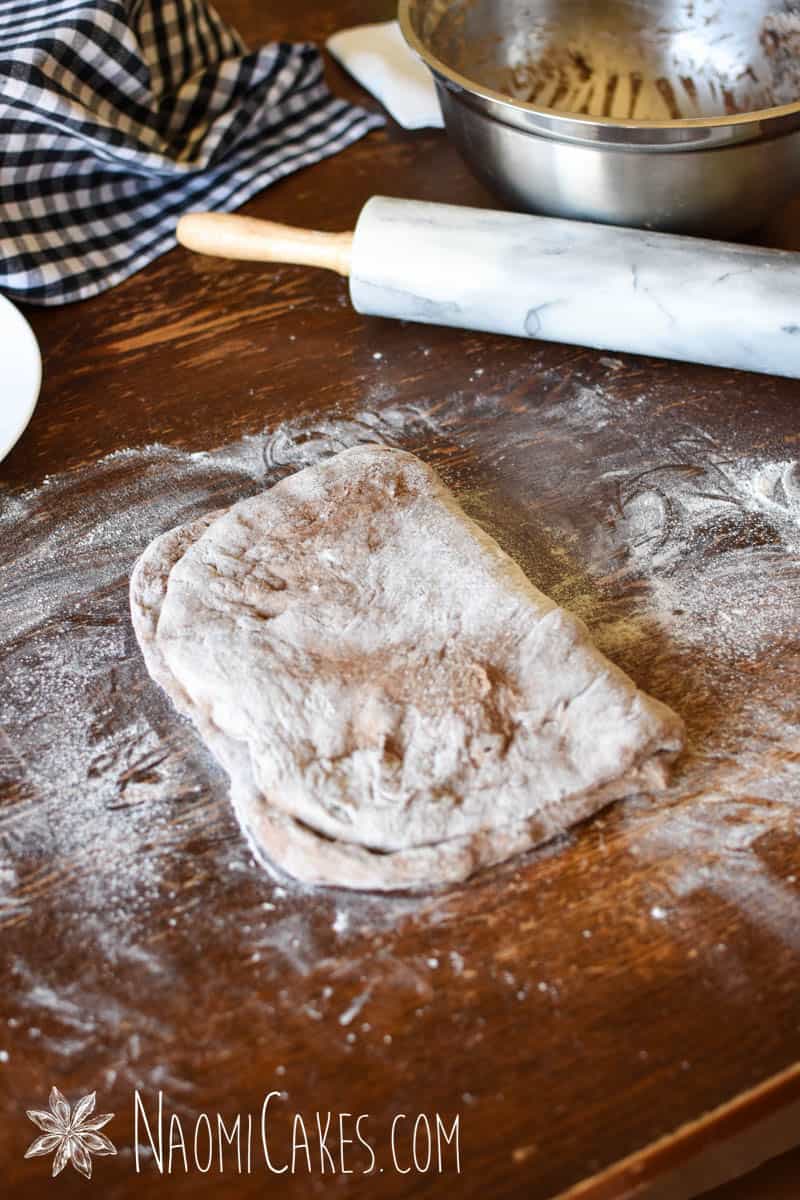
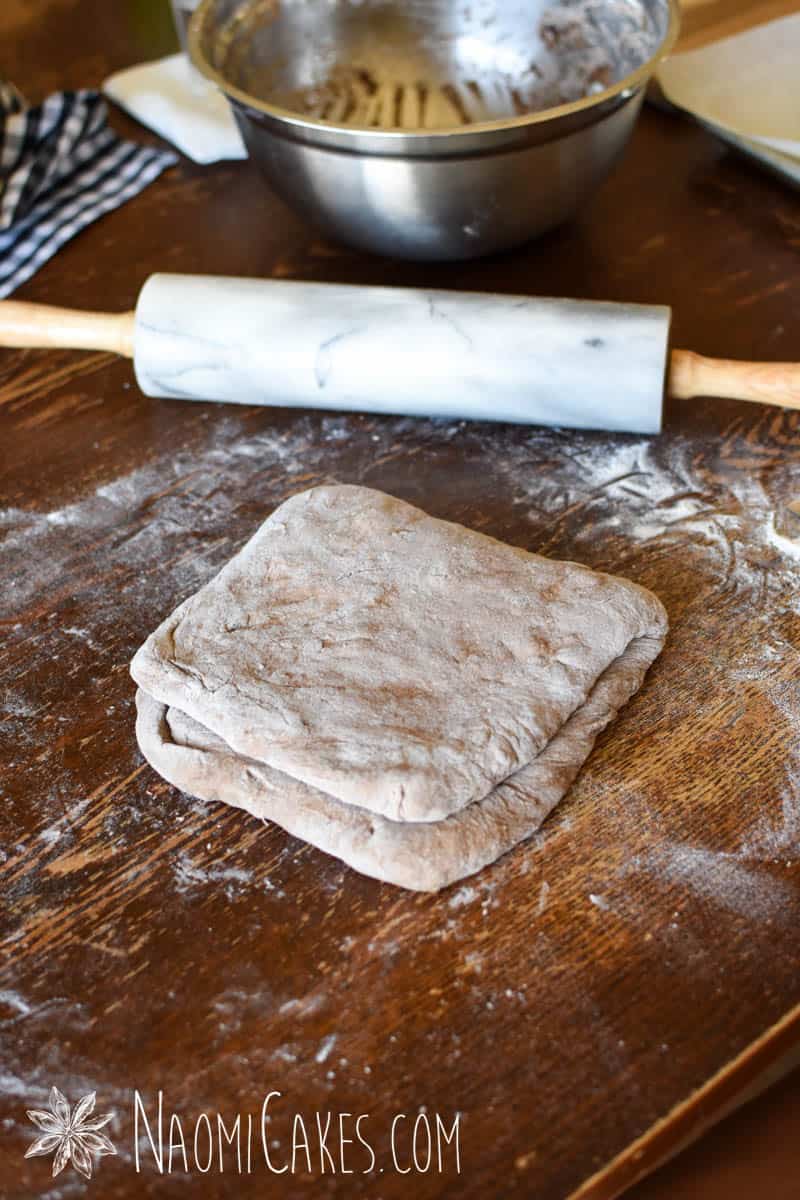
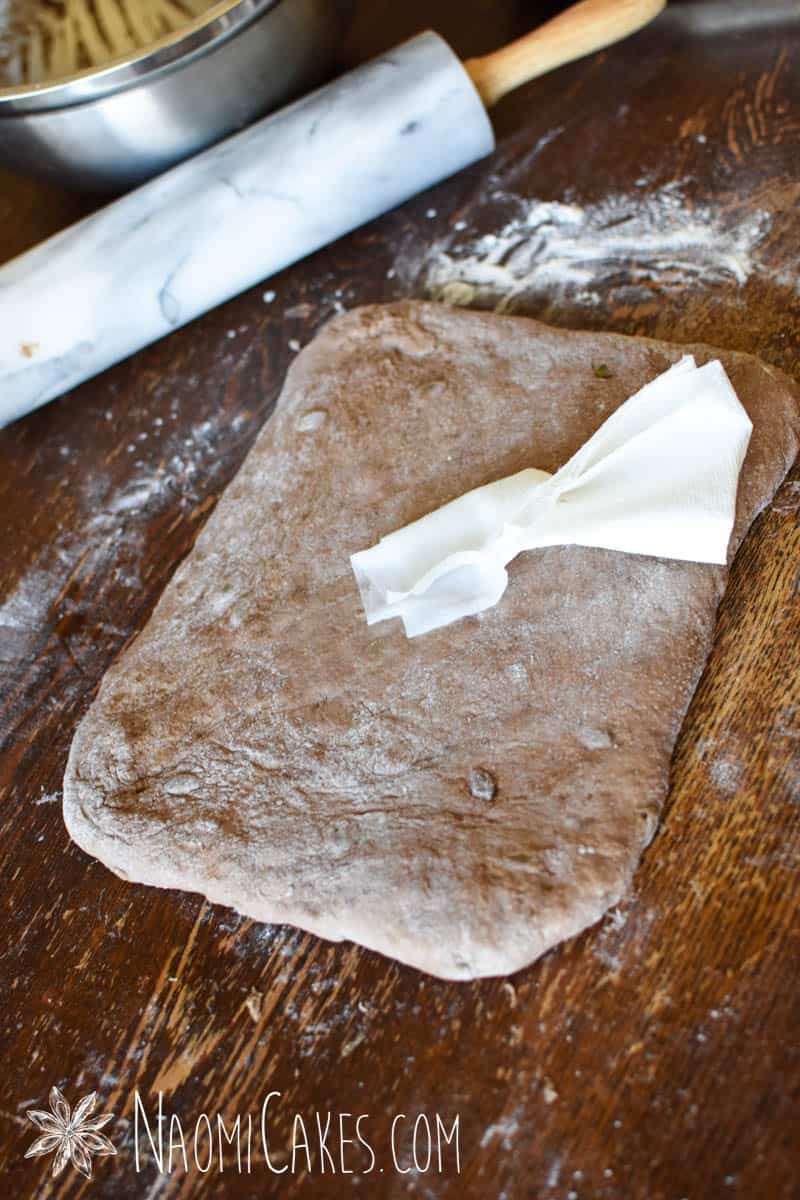
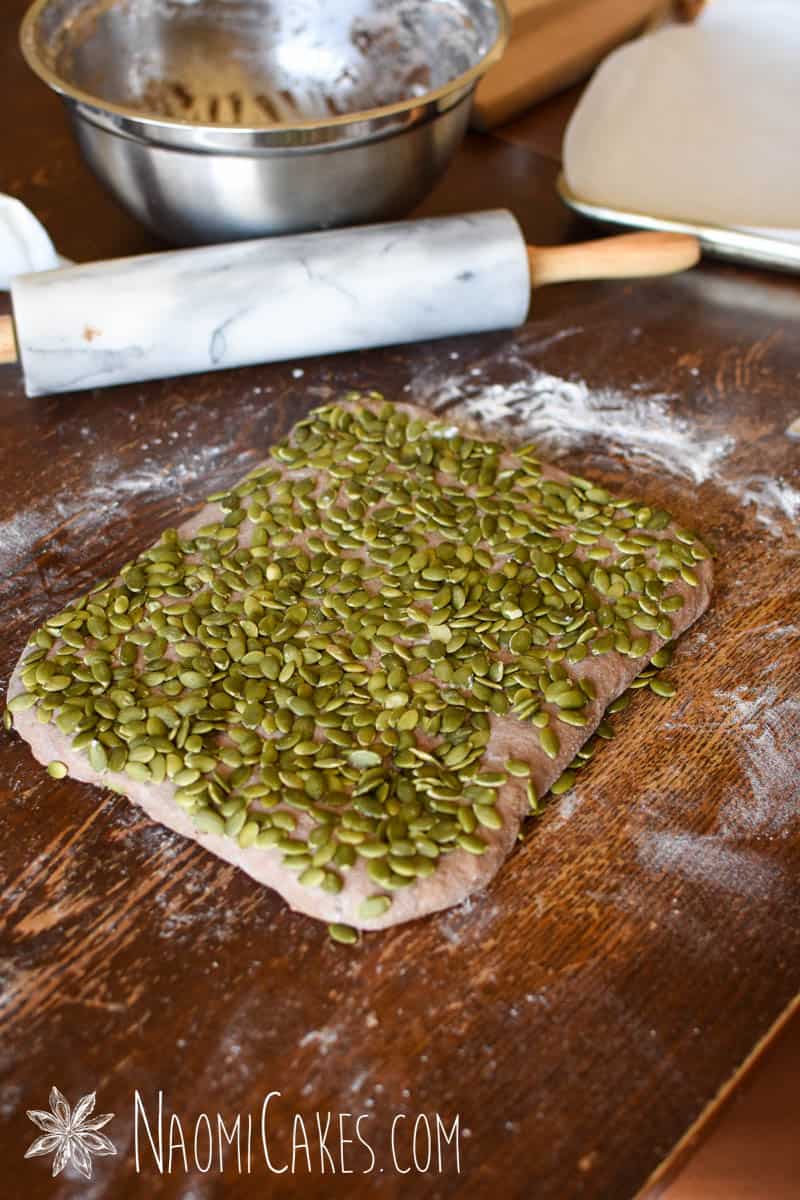
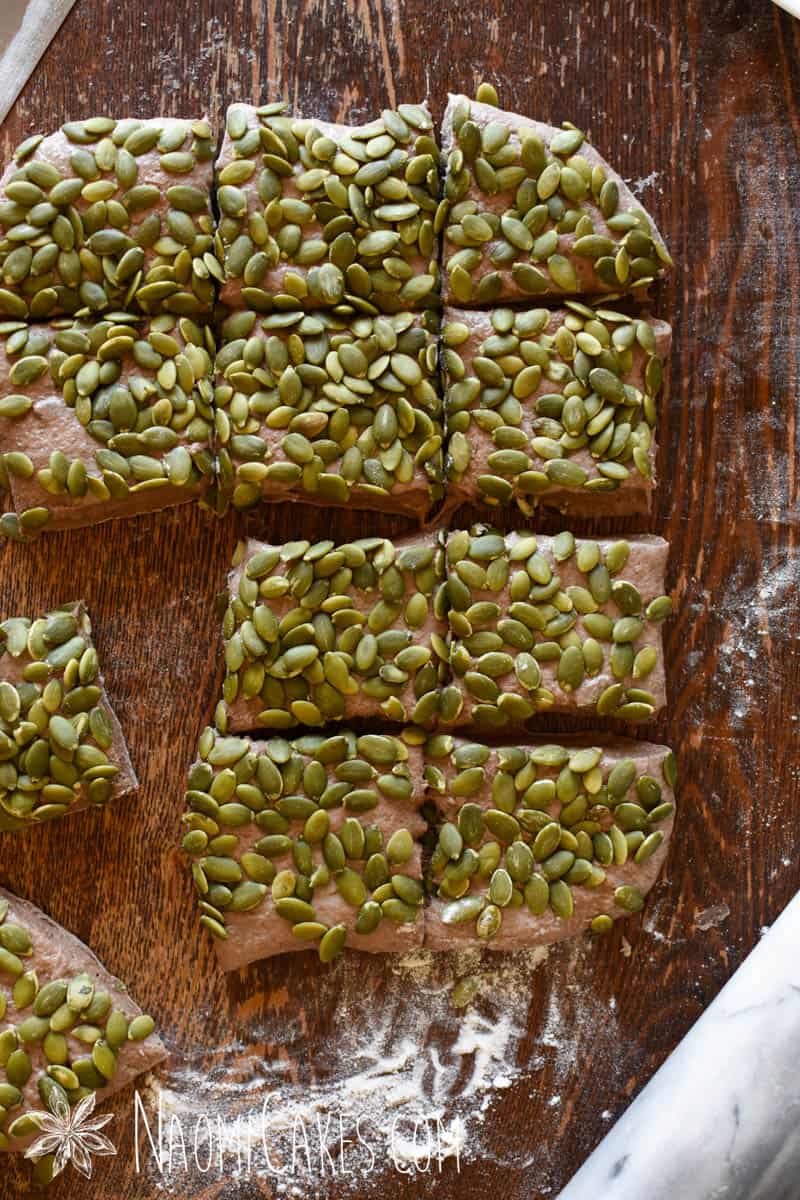
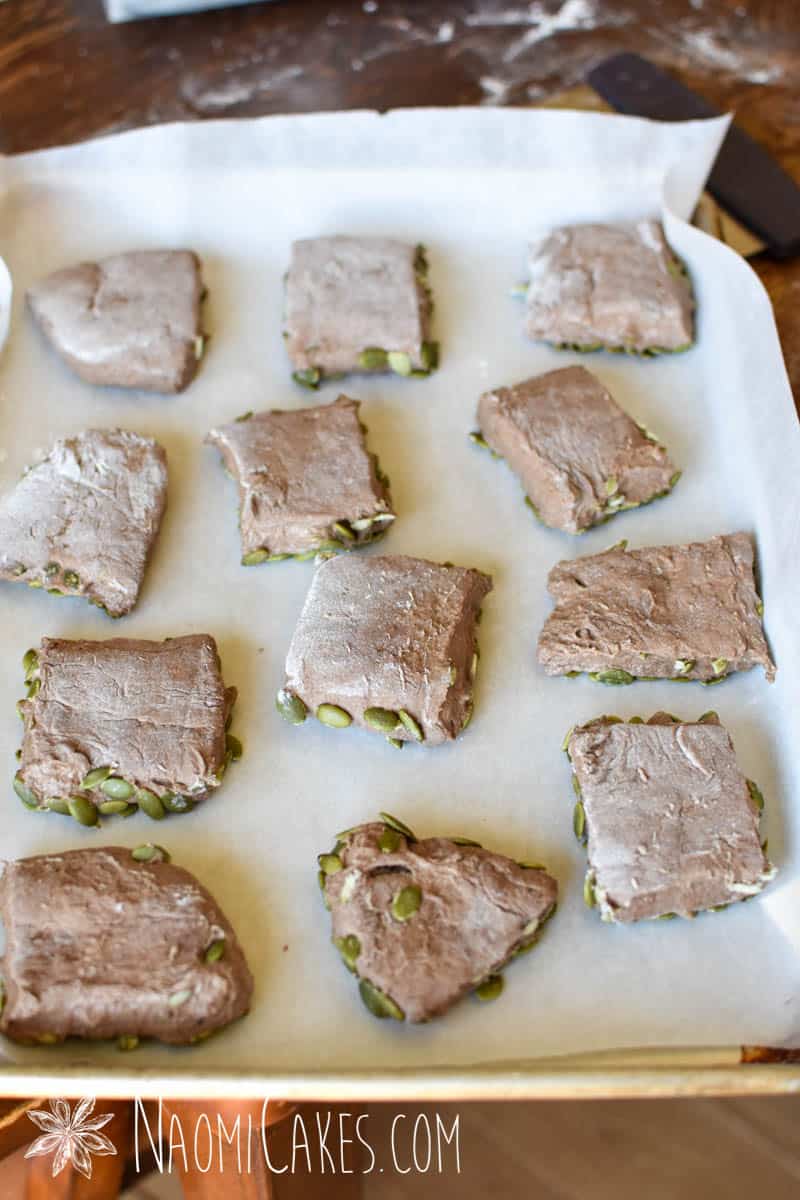
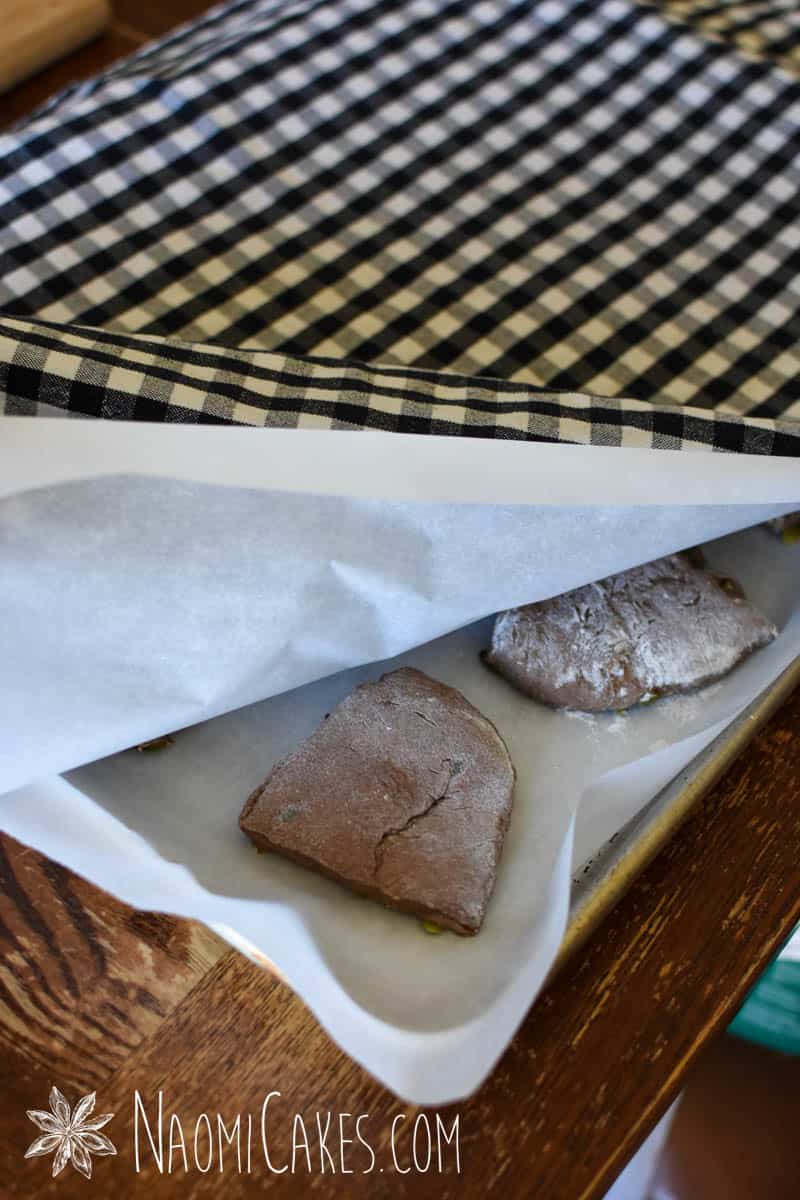
Bake the rolls:
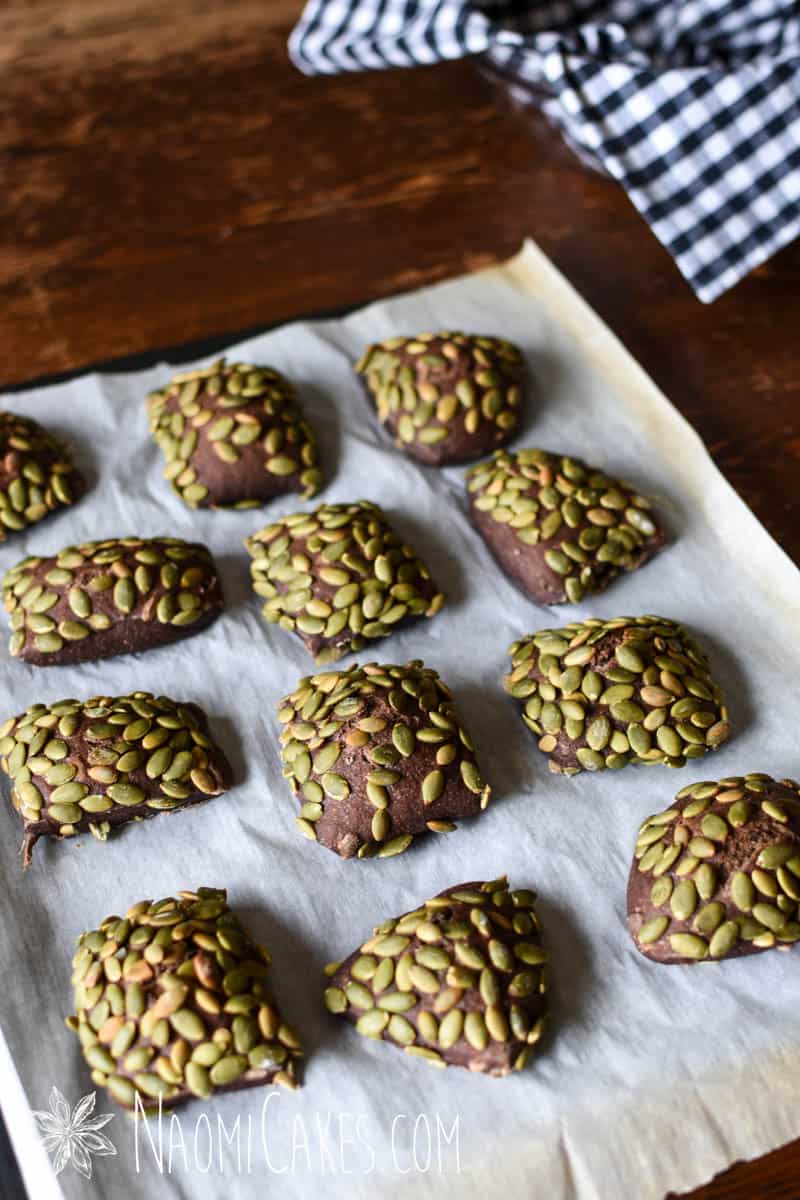
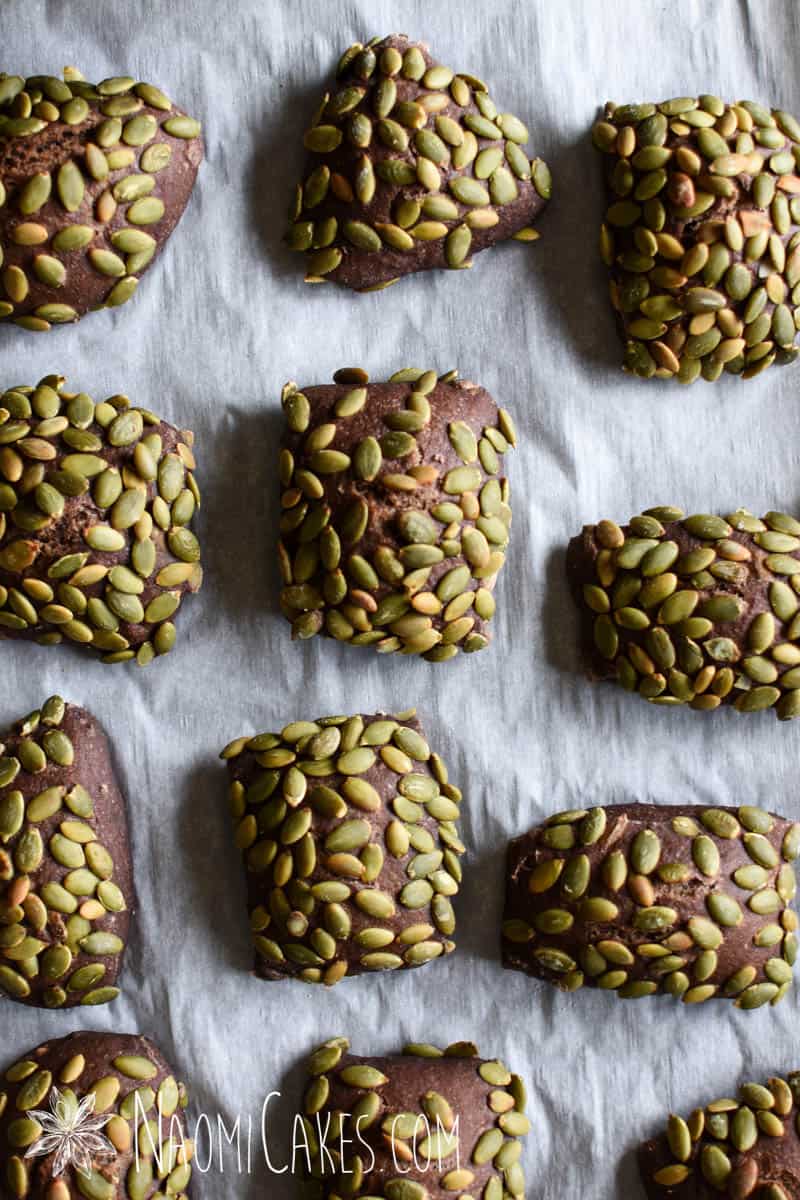
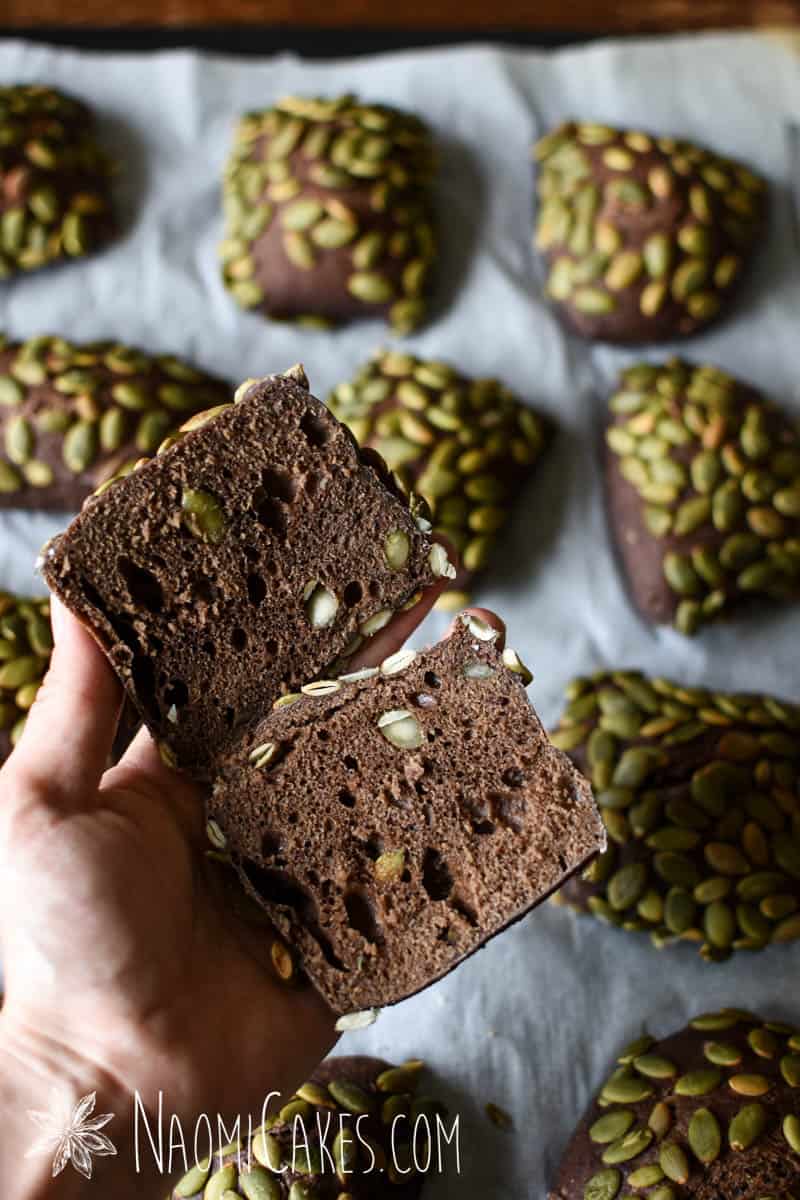
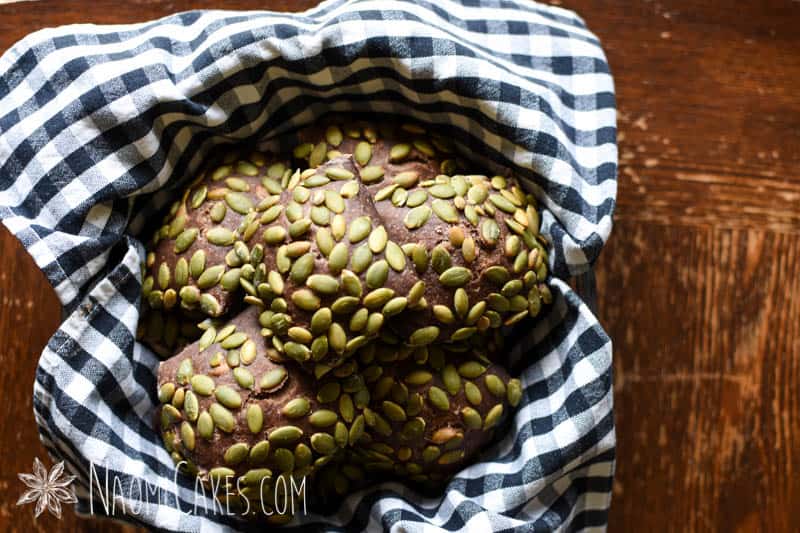
A few other great sourdough recipes:
- Sourdough Starter
- Easy No-Knead White Sourdough Bread
- Montreal Style Sourdough Sesame Bagels
- Sourdough Crêpes
- Sourdough Cinnamon Rolls with Sweet Vanilla Glaze
And that’s all for today! As always, if you make this recipe, be sure to leave me a comment or tag me in your photos on Instagram @naomicakesofficial. I always love to see (and share!) your great work!
Before I head out, I’ll ask you one quick question: How would you like best to serve these rolls? Let me know in the comments!
Bye for now,
Naomi
This post contains affiliate links.
Did you use dark rye flour or rye flour? If dark rye flour did you use molasses and cocoa? I miss these rolls so much living here for 30 years – I have to try baking them. I bake sourdough bread also.
Hi Elfi! I just use regular rye flour; the “Dark” of these rye rolls is from the cocoa and molasses. I appreciate this comment, I see why that could be confusing!